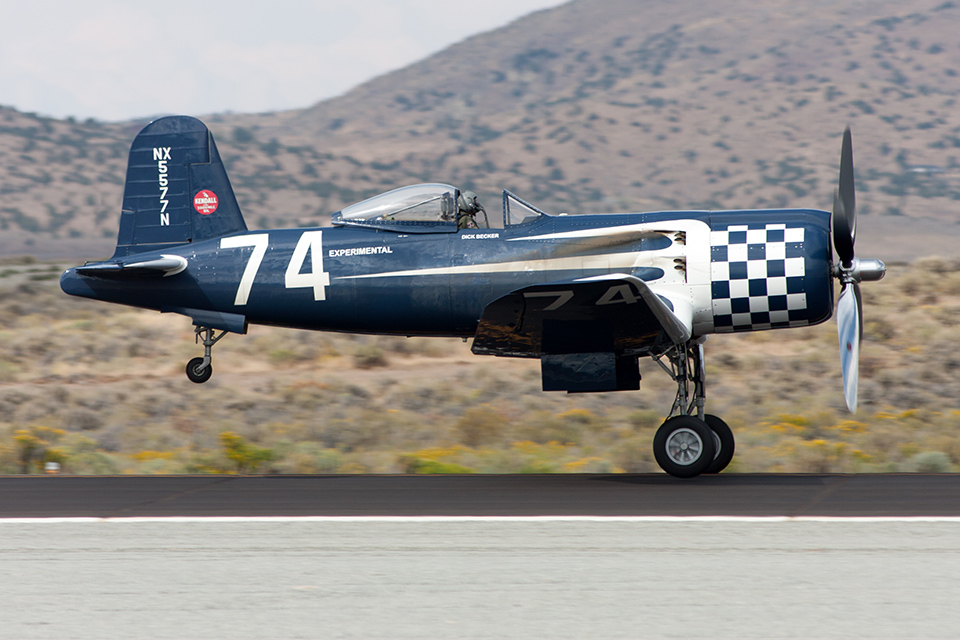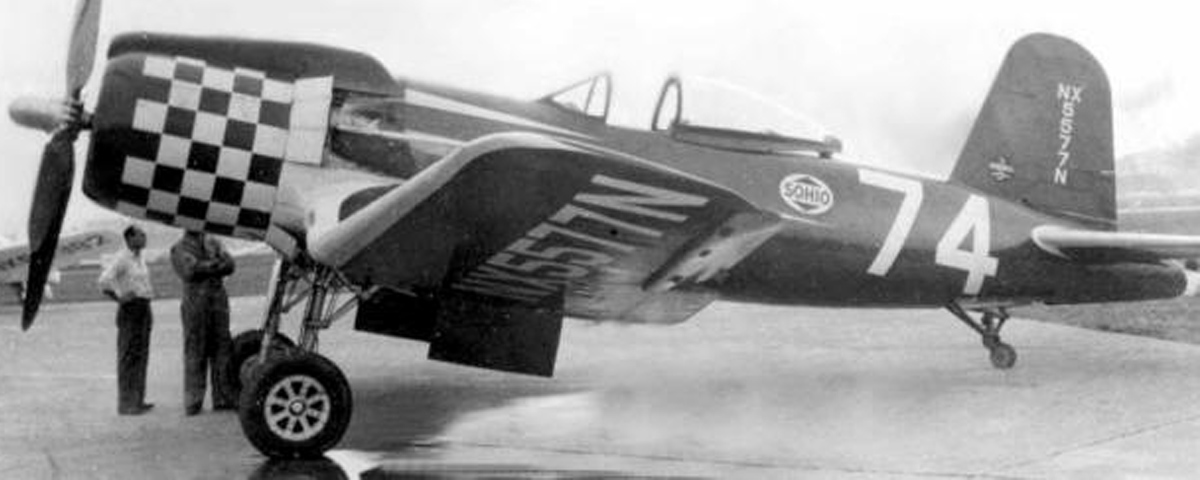Cook Cleland was a well-known Navy pilot, an ace who flew in both World War II and Korea. But he was better known as an air racer, winning both the 1947 and ’49 Thompson Trophy races back when the Thompson was nearly as news worthy as the Indy 500.
Cleland had finished sixth in 1946, when surplus Army P-39s and P-51s dominated the course. Legend has it that when Admiral William “Bull” Halsey asked him what it would take for a Navy airplane to win, Cleland said “an F2G.” The F2G Corsair, built by Goodyear, was powered by the 28-cylinder Pratt & Whitney R-4360 corncob engine. Several days later, five of the Navy’s F2Gs were mysteriously declared surplus and put up for sale for $1,250 apiece, and Cleland quickly bought four of them. They were often wrongly referred to as “Super Corsairs,” though neither Goodyear nor the Navy ever labeled them as such. The so-called Super Corsair was actually a single clipped wing standard F4U privately modified for Reno racing with an R-4360 in 1982.

Cleland flew the F2G shown here, known as “Race 74” for the number it was assigned, to victory in the 1947 Thompson Trophy race. In 1950 (some sources say 1953) it was bought by the late Walter Soplata for storage—preservation would be too kind a and in 1997 the Western Reserve Historical Society purchased it for display in their Crawford Auto-Aviation Museum, in Cleveland. The airplane was then trucked to Odegaard Aviation, in Kindred, N.D., for a full restoration.
Supposedly, the deal between Soplata and the Crawford Museum included the proviso that the airplane would never fly again (Soplata was opposed to the endangerment of rare warbirds). But the museum ran out of funds for the expensive project and sold it to a collector in Ohio who continued to fund the Odegaard restoration and apparently is hindered by no such requirements.
Though the Corsair was eagerly awaited at the EAA’s Oshkosh AirVenture this summer as a potential Grand Champion Warbird, the engine began “making metal” during its first test flight—chips visible in the oil screens—necessitating a teardown instead. The big Corsair appeared with a revitalized engine at this past September’s ill-fated Reno Air Races and flew in two Silver bracket heats before Jimmy Leeward’s tragic Gold Class accident. “Watching him pick off planes one by one in Thursday’s heat was a thing of beauty and was the moment that erased any doubt that Bob [Odegaard] was there to race, not just fly,” one knowledgeable spectator commented. The rest of the weekend’s racing was canceled.
Originally published in the January 2012 issue of Aviation History. To subscribe, click here.





